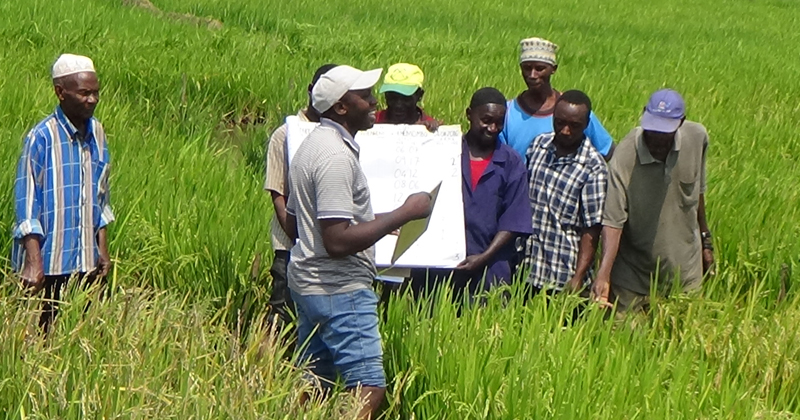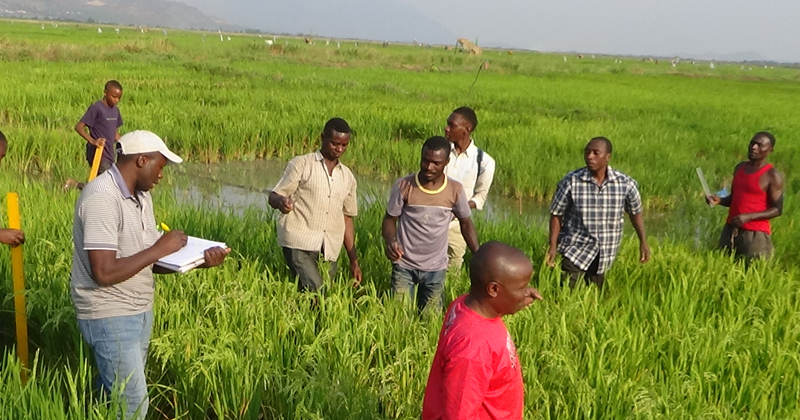


Hidden hunger
Illustration by Jeffrey C. Chase | Photos courtesy of Pius Kilasy March 29, 2024
UD graduate student and Borel Global Fellow Pius Kilasy researches how he can increase awareness of micronutrient deficiencies in Tanzania
Deficiencies in important micronutrients like iron, vitamin A and zinc can cause health issues. People facing these deficiencies can develop anemia, loss of vision, reduced immune function and stunted growth.
This lack of micronutrients in the diet is commonly referred to as hidden hunger and rears its head most often in low-income countries. The way to combat hidden hunger is to increase awareness of these deficiencies and show the target audience potential ways to obtain more micronutrients, which are vital to improving public health.
This is where University of Delaware researchers come in. Pius Kilasy of Tanzania, a former UD graduate student and Borel Global Fellow, teamed up with UD faculty members Leah Palm-Forster and Kelly Davidson and former UD faculty member Brandon McFadden, who was Kilasy’s advisor and is now a faculty member at the University of Arkansas. The researchers explored how to spread the knowledge about these deficiencies — and possible solutions — to citizens of Tanzania.
As detailed in a new research article in Global Food Security, the UD team pinpointed citizen awareness levels of these deficiencies and the ailments that accompany them. They also investigated what communication strategies were most effective at conveying the information to citizens.
A chief concern was informing nutrition policy in Tanzania.
“Pius is from Tanzania and worked in the government before joining UD,” said Palm-Forster, associate professor of applied economics and director of the Center for Experimental and Applied Economics. “He was really concerned about community issues and the particular challenges with micronutrient deficiencies.”

In 2008, Kilasy began working for the Tanzanian government first as an agricultural officer and then as an agricultural research officer.
“These roles have motivated me to work and increase efforts to serve my community,” Kilasy said.
A key way to combat hidden hunger is the production of biofortified food products; these crops are genetically bred to possess increased levels of micronutrients.
“For those with lower economic capability, they cannot manage to purchase drugs to supplement the micronutrient deficit,” Kilasy said. “Through biofortification, all groups can be served.”
Kilasy partnered with HarvestPlus, a company that creates biofortified crops such as beans with increased iron and wheat with increased zinc.
“The issue is, if people aren’t choosing to buy and consume the biofortified crops, then that technology really isn’t helping us,” Palm-Forster said. “In order to change behavior, we need to figure out why people aren’t consuming it to begin with.”
Through an online study, Kilasy used different methods of conveying the information about these micronutrient deficiencies and biofortified crops to Tanzanian citizens. Subjects were split into groups. Each group was shown a different schematic containing information about the deficiencies, health risks and how they could obtain more micronutrients.
One of the groups was shown how common micronutrient deficiencies are in Tanzania, as well as what specific nutrients could be found in biofortified crops. Pius and his team found that this method of communication was the most effective way to increase knowledge of hidden hunger and the benefits of biofortified crops.
“Tanzania is one of several developing countries dealing with micronutrient deficiencies and this problem of hidden hunger,” said Davidson, assistant professor of applied economics. “So the work that we’ve done here can be translated to help develop nutrition campaigns across the globe.”

Through targeted communications, organizations and agencies can inform nutrition policy makers about how they can combat hidden hunger — a major win for public health.
Given that Kilasy worked in the Tanzanian government for many years before his UD graduate studies, he brought local insight into the research project, propelling its impact.
“Having the knowledge of how the systems work in Tanzania was crucial to this project,” Davidson said. “Having a local expert right on the team was indispensable.”
The Borel Global Fellows Program allowed Kilasy to complete his core coursework and experimental design at UD, but then return to Tanzania for the main data collection and thesis defense. The program’s structure gives these Blue Hens the unique opportunity to create projects that directly benefit their home country.
“I love that the Borel Fellows Program has a focus on in-country capacity building,” Davidson said. “It’s important to work with country institutions and leaders to have local solutions to problems.”
“Through the Borel Fellows sponsorship, I conducted research that could provide intervention measures to combat micronutrient deficiency,” added Kilasy, who hopes to join a doctorate program to continue with his current research. “Without their support, I could not fulfill the ambition of advancing my career.”
About the funding
This work was supported by the Borel Global Fellows Program. Thanks to a generous gift from Jim and Marcia Borel, the program supports students from Sub-Saharan Africa to pursue a master’s of science degree in the UD College of Agriculture and Natural Resources. The program aims to help increase food security, improve agricultural development and conserve natural resources in Africa by educating scientists at UD who will become knowledge leaders that return to their native countries to promote and improve wealth and health for farmers.
Contact Us
Have a UDaily story idea?
Contact us at ocm@udel.edu
Members of the press
Contact us at 302-831-NEWS or visit the Media Relations website

